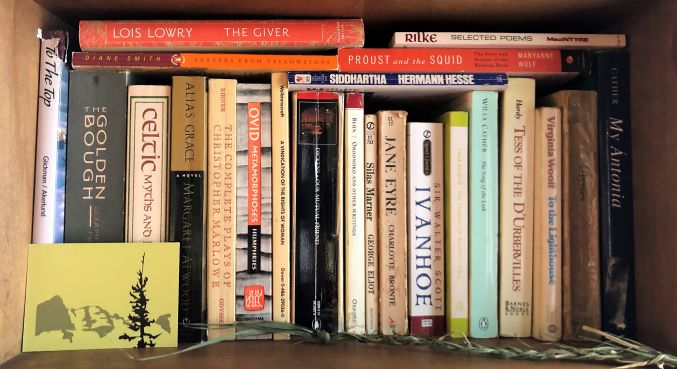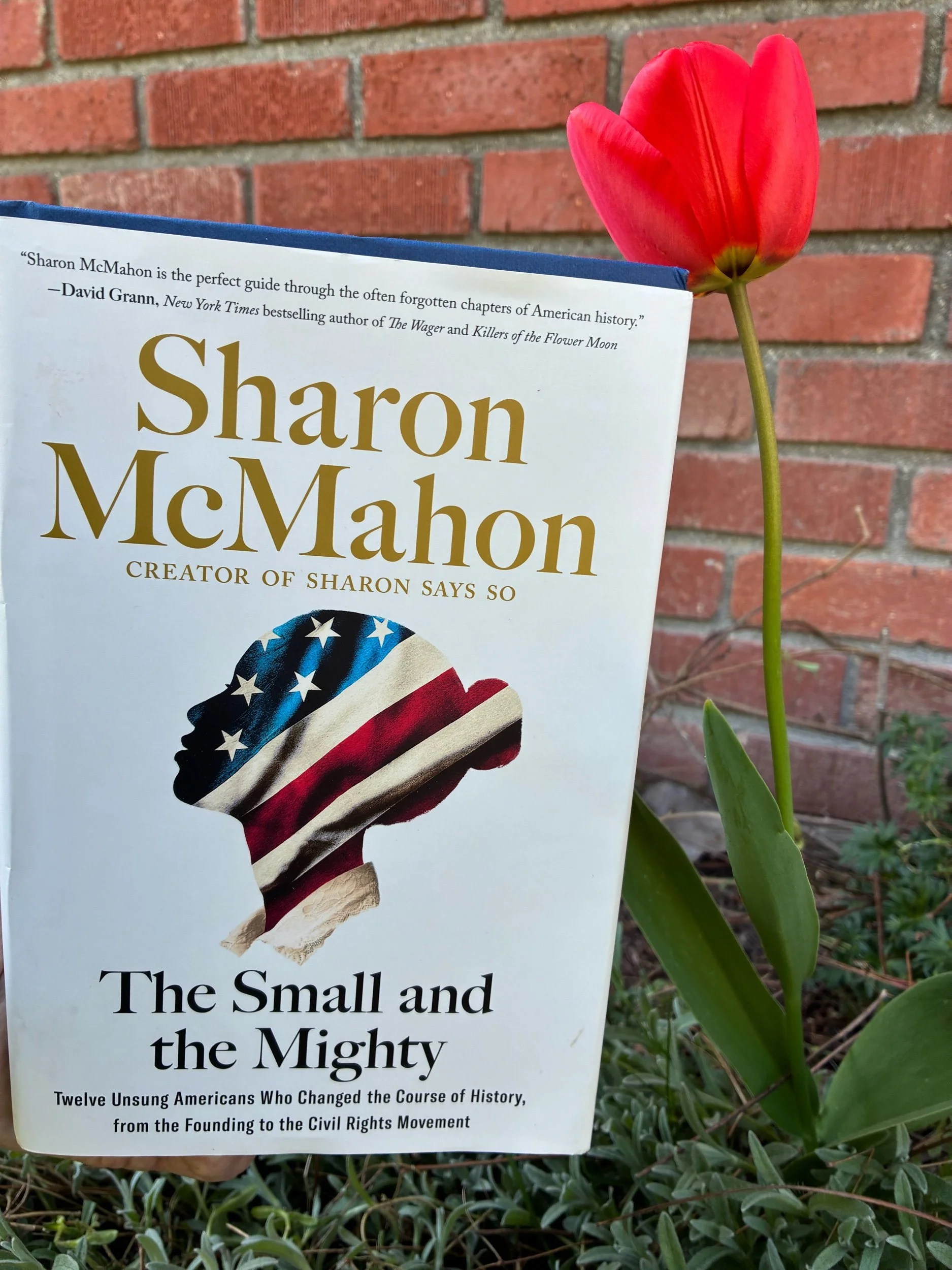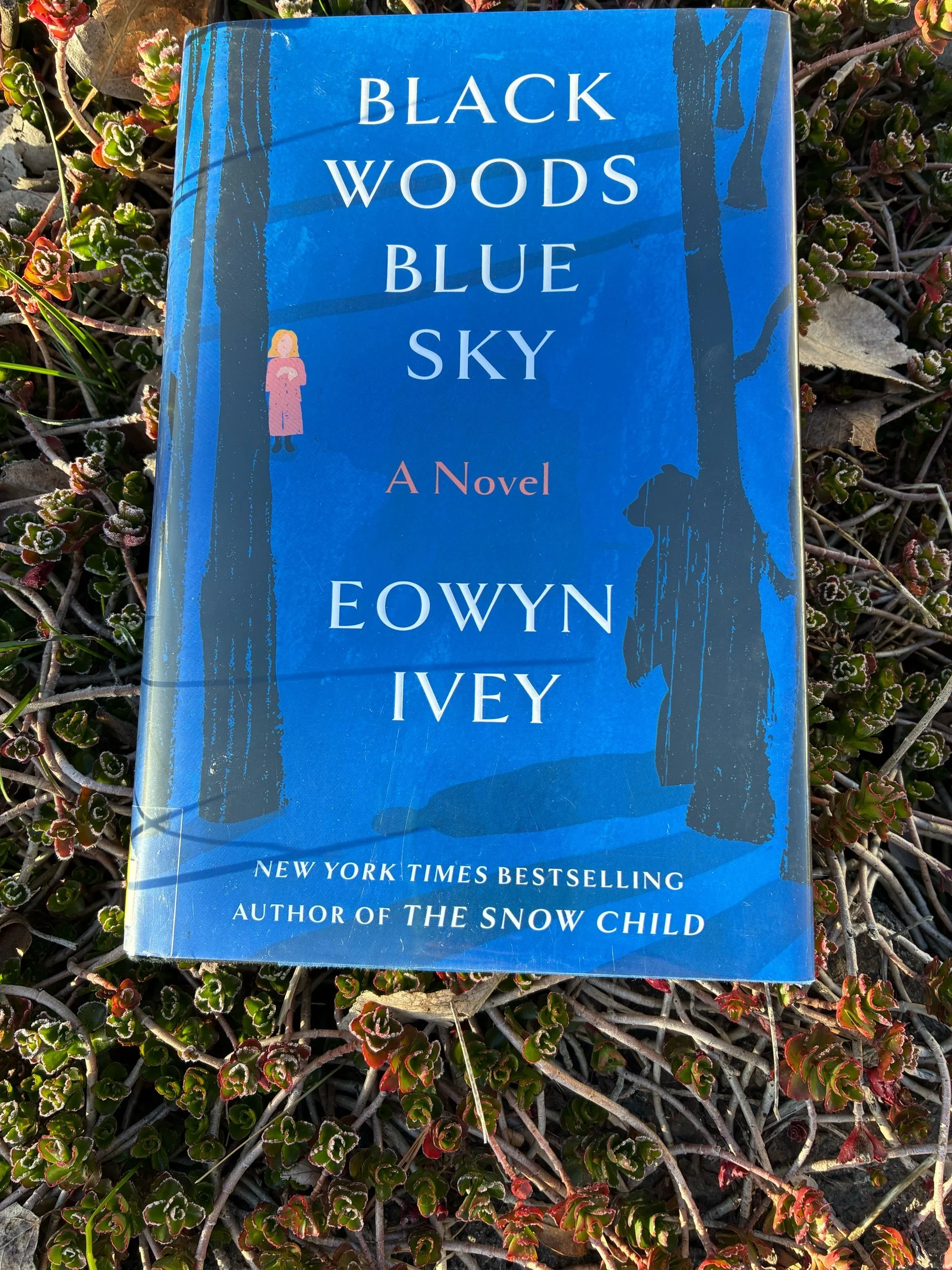The Small and the Mighty
Sharon McMahon (pronounced McMan) made a name for herself as “America’s Civics Teacher” over the course of the last decade. A high school social studies teacher, she is very knowledgeable about American history and government (and the process of relaying that information to others); for years she has been sharing her passion and knowledge with anyone interested in following from her @sharonsaysso account on Instagram. She also has a very active Substack newsletter (The Preamble). Last year she published her first book: The Small and the Mighty: Twelve Unsung Americans Who Changed America, from the Founding to the Civil Rights Movement (2024). The timing couldn’t have been better. This nonfiction book highlights the lives and actions of twelve Americans from our country’s inception to the Civil Rights movement who may not be well known, but whose impact was real. Indeed, The Small and the Mighty is the inspiring history lesson many of us crave of late. Its biographies capture the spirit of democracy and freedom for all that many treasure as core American values.
McMahon begins this book with a prologue that describes her discovery of the northern lights during one cold midwestern morning out on her childhood paper route. The audacious and momentary spectacle of the aurora borealis serve as the perfect metaphor for the lives of so many Americans—rich, poor, enslaved, free, male, female, southern, eastern, western—whose lives shifted our national history in some (small and mighty) way. As the subtitle suggests, the mini biographies that McMahon outlines in The Small and the Mighty set a spotlight on individuals in American history who are little know but whose realized authentic change throughout their lives. These are stories of men and women who believed in and worked for a better world, beginning in their own communities.
The lives highlighted in The Small and the Mighty span socio-economic, geographic, gender, and race lines. The one thing that connects all the stories is a theme of working for a better world, whether that be in classroom, from a pulpit, a business, or in a legislative body. Teachers, suffragettes, pioneers, formerly enslaved individuals, immigrant’s children, and more make up the inspiring cast of real Americans who are “the small and the mighty.” Some of their stories intersect in McMahon’s telling, others stand alone, but they all lived with integrity and in service to the notion of a better America. Each of their stories serves as a light in the darkness.
The cast of characters include: Clara Brown (1830s Kentucky through 1870s Colorado), Virginia Randolph (1890s to 1940s Virginia), Katherine Lee Bates (Cape Cod in 1859 through adventures and eventually to Chicago in the 1890s), Inez Milholland (19teens New York to the West), Maria de Lopez (19teens California), Rebecca Brown Michelle (1856 to 1908 Idaho), the Hello Girls (like Grace Banker) who served in France during WWII, Anna Thomas Jeanes (1822 Philadelphia), William James Edward (Alabama 1869), Julius Rosenwald (Illinois, 1862) and Booker T. Washington (Virginia, 1856), Daniel Inouyes (Hawaii, 1924), Norman Mineta (California, 1942), Claudette Colvin and others (Alabama, 1950s), Septima Clark (Charleston, 1898). The list goes on. Despite the subtitle (“Twelve Unsung Americans”), The Small and the Mighty abounds with stories of people who made change. Connections between unlikely allies percolate throughout the histories and leave the reader hopeful, inspired, eager to, perhaps, work for similar change themselves, even alongside their would-be opponents.
The stories include considerable attention to things like women’s suffrage, the Jeanes Schools that made huge impacts educating Black children in the Jim Crow South, and the Civil Rights Movement culminating with desegregation of schools (or lack thereof in places like Prince Edward County, Virginia). Wealthy businessmen work alongside formerly enslaved people. Heiresses fund the education of poor Black children. Introverted poets’ words capture the national spirit. Japanese-Americans step into service through resilience despite the indignities they and their families suffered during WWII interment. Individuals rally against institutional racism during the Civil Rights Movement and find innovative ways to solve problems around educating all students in the face of school vouchers and other programs that intentionally undermined that right. Famous characters like Alexander Hamilton, W. E. B. Du Bois, and Booker T. Washington show up in The Small and the Mighty as important but ancillary characters while lesser known folks take center stage. McMahon’s writing also emphasizes the complicated and multifaceted nature of any history. She encourages readers to consider people and events in the context of the historical moments in which they occurred. The Small and the Mighty also highlights friendships that crossed political party and ideology; McMahon’s book reminds today’s reader that things have always been contentious in American politics, but that rays of light to be found in even the darkest of times, so long as our eyes are open.
A note on format: If you are a fan of audiobooks, Sharon McMahon reads this one herself and it makes for delightful listening. Her tone and timing are spot on and the audiobook feels like a long sit down with a knowledgeable friend. Suffice it to say, the physical or audio versions of The Small and The Mighty make for excellent “reading.”
Bibliography:
McMahon, Sharon. The Small and The Mighty: Twelve Unsung Americans Who Changed America, from the Founding to the Civil Rights Movement. Thesis: 2024.
A Few Great Passages:
“[O]ne Jeanes teacher, Mildred Williams, said on this topic: "Gloom and pessimism must not overshadow the good which has grown out of the several years of the Civil Rights laws. Optimism must prevail and persistent movements continue, using every useful weapon at hand to make the dream, as stated by one of America's most recent forthright Black leaders [Dr. Martin Luther King Jr.] a reality. He said, I have a dream that one day, on the red hills of Georgia, sons of former slaves and the sons of former slave owners will be able to sit down together at the table of brotherhood.'
‘Progress is usually born out of struggle. Old doors close, but new ones will open’” (163).
“Hope is a choice that we make each morning, and we do not have the luxury of hopelessness if we want to see progress. The United States itself was born out of struggle. [. . .] Progress doesn't arrive unbidden, carried on the back of a silvery bird, deposited on our doorsteps during the night. Progress is birthed. It is conceived of and labored for. It is the work of multitudes. None of us can do it all. But all of us can do something. And it might as well be the next needed thing” (163-164).
“Then, and now, one of the most effective ways to stop cultural change is to create a moral panic around it. Moral panics have been around since this country's inception, with the Salem witch trials being among the first widely publicized (and deadly) panics. Since then, moral panics have been used as a tool to subvert and dismantle movements that the dominant caste views as a threat. And this included civil rights” (243).
“I'd want you to know that often, the small are truly the mighty. That their stories may be eclipsed by a dominant sun, but that doesn't mean they aren't ours to discover, auroras in the predawn hours of morning. We should get up early. We should look for them. We should let the complicated truth of their lives wash over us and orient our spirits toward hope” (278).





